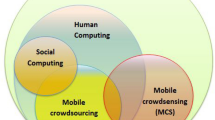Abstract
Mobility tracking operations in Personal Communication Services Networks (PCS) are signal-consuming. Several strategies have been proposed in the literature to reduce both the location update (LU) and the paging (PG) costs. In this paper, we use a Three Location Area (TrLA) Location Tracking Algorithm. In the TrLA, the Mobile Terminal (MT) is located in three Location Areas (LAs) with a common perimeter between them. They form the Big Location Area (BLA). Each time the MT exits the BLA, and thus enters a new LA, it triggers an LU message towards the Fixed Network (FN) and updates its caché memory. In this article, we evaluate the impact of the TrLA Location Tracking Algorithm in the FN and provide the Registration (RG) and Interrogation (IG) costs in order to estimate the load per MT in the FN devices. These devices are the Home Location Register (HLR) and the Visitor Location Registers (VLRs), and they form the System DataBase (SDB). Our study is based on an analytical model of a semi-Markov process.
Similar content being viewed by others
References
L. Kleinrock, Queueing Systems, Vol. 1, John Wiley, 1975.
R.W. Wolff, “Poisson Arrival See Time Averages”, Operation Research, Vol. 30, No. 2, pp. 223–231, 1982.
A. Bar-Noy, I. Kessler and M. Sidi, “Mobile Users: To Update or Not to Update”, in Proceedings of the INFOCOM'94, Toronto, Ontario (Canada), June 14–16, 1994, pp. 570–576.
A. Bar-Noy, I. Kessler and M. Sidi, “Tracking Strategies in Wireless Networks”, in Proceedings of the IEEE International Symposium on Information Theory, Trondheim (Norway), June 27–July 1, 1994, pp. 413.
A. Bar-Noy, I. Kessler and M. Sidi, “Mobile Users: To Update or Not to Update”, ACM-Baltzer Journal of Wireless Networks, Vol. 1, No. 2, pp. 175–185, 1995.
F.V. Baumann and I.G. Niemegeers, “An Evaluation of Location Management Procedures”, in Proceeding of the 3rd International Conference on Universal Personal Communications, San Diego, California (U.S.A.), September 27–October 1, 1994, pp. 359–364.
I.F. Akyildiz and J.S.M. Ho, “Dynamic Mobile User Location Update for Wireless PCS Networks”, ACM-Baltzer Journal of Wireless Networks, Vol. 1, No. 2, pp. 187–196, 1995.
J.S.M. Ho and I.F. Akyildiz, “Mobile User Location Update and Paging Delay Constraints”, ACM-Baltzer Journal of Wireless Networks, Vol. 1, No. 4, pp. 413–425, 1995.
I.F. Akyildiz, J.S.M. Ho and Y.-B. Lin, “Movement-Based Location Update and Selective Paging for PCS Networks”, IEEE/ACM Transactions on Networking, Vol. 4, No. 4, pp. 629–638, 1996.
S. Okasaka, S. Onoe, S. Yasuda and A. Maebara, “A New Location Updating Method for Digital Cellular Systems”, in Proceedings of the IEEE 41st Vehicular Technology Conference, St. Louis, Missouri (U.S.A.), May 19–22, 1991, pp. 345–350.
Y.-B. Lin, “Reducing Location Update Cost in a PCS”, IEEE/ACM Transactions on Networking, Vol. 5, No. 1, pp. 25–33, 1997.
P. García Escalle, V. Casares Giner and J. Mataix Oltra, “Reducing Location Update and Paging Costs in a PCS Network”, in Proceedings of 9th MPRG/VT Symposium on Wireless Personal Communications, Blacksburg (Virginia), June, 1999, pp. 221–231. See also “Wireless Personal Communications — Channel Modeling and Systems Engineering”, KAP, edited by W.H. Tranter, B.D. Woerner, T.S. Rappaport and J.H. Reed, Vol. 536, Chapter 19, November 1999.
M.M. Zonoozi and P. Dassanayake, “User Mobility Modeling and Characterization of Mobility Patterns”, IEEE Journal on Selected Areas in Communications, Vol. 15, No. 7, pp. 1239–1252, 1997.
E. Alonso, K.S. Meier-Hellstern and G. Pollini, “Influence of Cell Geometry on Handover and Registration Rates in Cellular and Universal Personal Telecommunication Networks”, in Proceedings of the 8th ITC Spec. Sem. Universal Personal Telecommunications, Santa Margherita Ligure, Genova (Italy), October 12–14, 1992, pp. 261–270.
S.M. Ross, Stochastic Processes, 2nd edition, John Wiley, 1996.
A.R. Modaressi and R.A. Skoog, “Signalling System No. 7: A Tutorial”, IEEE Communications Magazine, pp. 19–35, 1990.
B. Jabbari, “Intelligent Network Concepts in Mobile Communications”, IEEE Communications Magazine, pp. 64–69, 1992.
J.Z. Wang, “A Fully Distributed Location Registration Strategy for Universal Personal Communications Systems”, IEEE Journal on Selected Areas in Communications, Vol. 11, No. 6, pp. 850–860, 1993.
S.J. Park, D.C. Lee and J.S. Song, “Locality Based Location Tracking Using Virtually Hierarchical Link in Personal Communications Services”, IEICE Transactions on Communications, Vol. E81-B, No. 9, pp. 1779–1781, 1998.
I.F. Akyildiz and J.S.M. Ho, “On Location Management for Personal Communications Networks”, IEEE Communications Magazine, Vol. 34, No. 9, pp. 138–145, 1996.
Author information
Authors and Affiliations
Rights and permissions
About this article
Cite this article
Escalle, P.G., Giner, V.C. Evaluating Registration and Interrogation Costs in a PCS Network. Wireless Personal Communications 18, 227–245 (2001). https://doi.org/10.1023/A:1017586212245
Issue Date:
DOI: https://doi.org/10.1023/A:1017586212245




